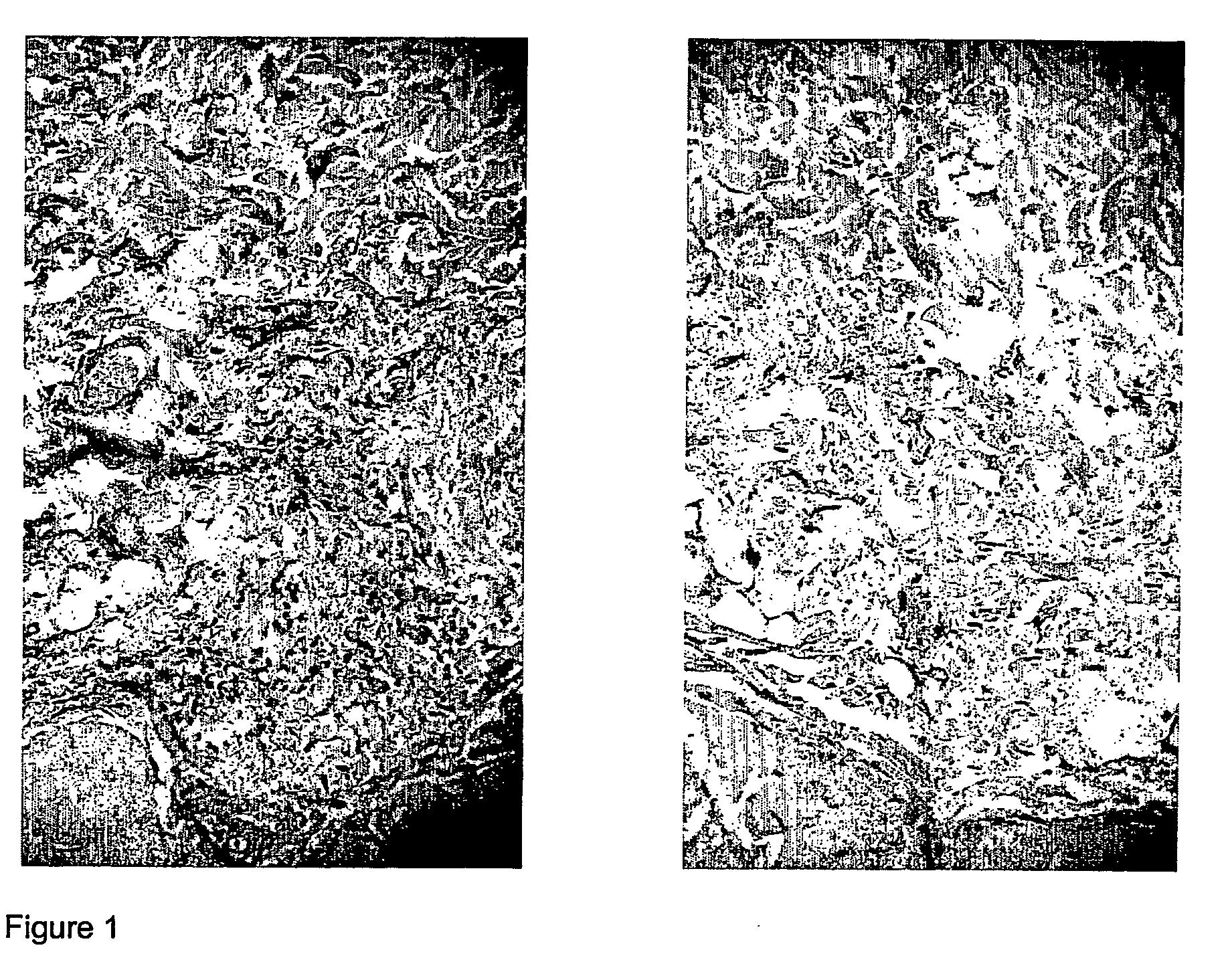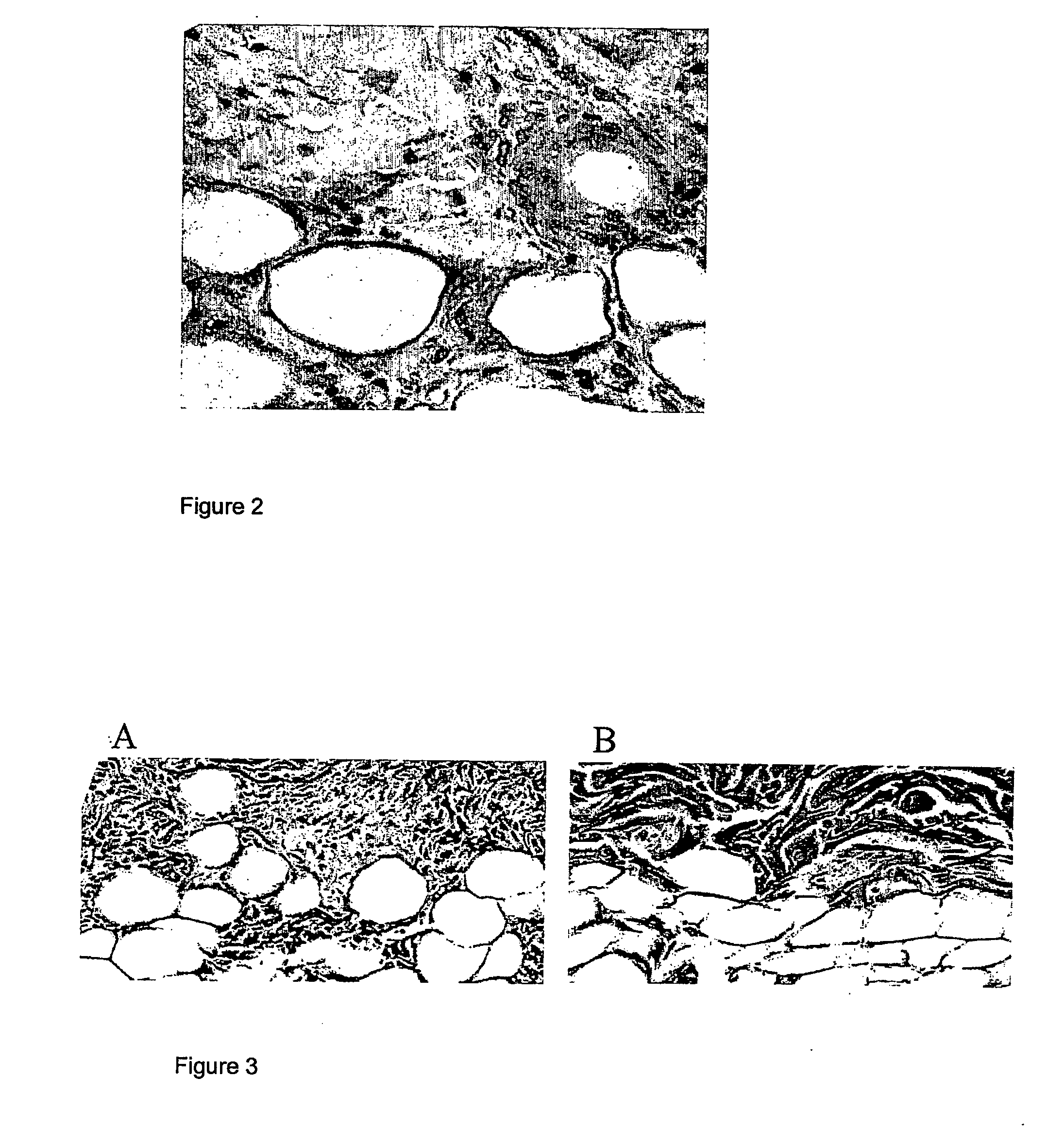Carbohydrate-based anti-wrinkle and tissue remodelling compounds
a technology of carbohydrate-based anti-wrinkle and tissue remodelling, which is applied in the direction of esterified saccharide compounds, magnoliophyta medical ingredients, oligosaccharides, etc., can solve the problems of no teaching and no enabling disclosure, and achieve the effect of stimulating collagen production and augmentation of the treated skin
- Summary
- Abstract
- Description
- Claims
- Application Information
AI Technical Summary
Benefits of technology
Problems solved by technology
Method used
Image
Examples
example 1
[0054] The effects of intradermally injected glucose, maltose and maltopentaose on cell migration into the site of administration in the skin of normal rats. Healthy, specific pathogen free female Fischer rats 10-12 weeks of age (n=3) were anesthetised with ether and hair on their backs was clipped (electric miniclippers) from two areas of approximately 1.5 cm×4 cm either side of and paralleling the spinal column. The test and control substances were injected into the centre of 1 square cm defined areas. Substances were administered in such a fashion that each was injected into 4 different positions at least once in order to control for any possible anatomical positioning effect. Agents were dissolved in normal saline at a concentration of 100 mg / ml and sterile filtered prior to administration. Fifty microlitre injection volumes were given intradermally using 30 gauge needles and control injections consisted of 50 microlitres of sterile normal saline. Animals were sacrificed 48 hour...
example 2
[0055] The effects of intradermally injected dextran and maltopentaose on cell migration into the site of administration in the skin of normal rats. In a similar experiment to that outlined in Example 1 above, female Fischer rats, 10-12 weeks of age (n=3) were treated with 50 microlitre volumes of i) 50 mg / ml of clinical grade dextran (MW 71,400); ii) 50 mg / ml maltopentaose; or iii) normal saline using a 30 gauge needle. Skin injection sites were submitted for histological sectioning and examined microscopically 48 hours following injection. In this case, increased cellularity was noticed in the dextran injection sites but this was not statistically significantly different from the saline injected sites. The maltopentaose injected sites showed a clear and significant difference in cellularity versus saline.
example 3
[0056] The effects of intradermally injected maltotriose and maltopentaose on cell migration into the site of administration in the skin of normal rats. In a similar experiment to that outlined in Example 1 above, female Fischer rats, 10-12 weeks of age (n=2) were treated with 50 microlitre volumes of i) 100 mg / ml of maltotriose; ii) 100 mg / ml maltopentaose; or iii) normal saline using a 30 gauge needle. Skin injection sites were submitted for histological sectioning and examined microscopically 48 hours following injection. In this case, no increase in cellularity was noticed in the saline or maltotriose injection sites but as in Examples 1 and 2 above, the maltopentaose injected sites showed a clear and significant difference in cellularity versus saline.
PUM
| Property | Measurement | Unit |
|---|---|---|
| areas | aaaaa | aaaaa |
| concentration | aaaaa | aaaaa |
| volumes | aaaaa | aaaaa |
Abstract
Description
Claims
Application Information
 Login to View More
Login to View More - R&D
- Intellectual Property
- Life Sciences
- Materials
- Tech Scout
- Unparalleled Data Quality
- Higher Quality Content
- 60% Fewer Hallucinations
Browse by: Latest US Patents, China's latest patents, Technical Efficacy Thesaurus, Application Domain, Technology Topic, Popular Technical Reports.
© 2025 PatSnap. All rights reserved.Legal|Privacy policy|Modern Slavery Act Transparency Statement|Sitemap|About US| Contact US: help@patsnap.com


